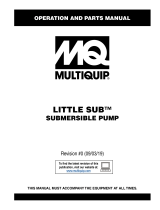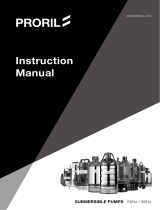
PS 3-Phase Series Foreword
wc_tx001370gb.fm 3
Foreword
Machines included in this manual:
Machine
documentation
Keep a copy of the Operator’s Manual with the machine at all times.
Use the separate Parts Book supplied with the machine to order replacement
parts.
Refer to the separate Repair Manual for detailed instructions on servicing and
repairing the machine.
If you are missing any of these documents, please contact Wacker Neuson
Corporation to order a replacement or visit www.wackerneuson.com.
When ordering parts or requesting service information, be prepared to provide
the machine model number, item number, revision number, and serial number.
Expectations
for
information in
this manual
This manual provides information and procedures to safely operate and
maintain the above Wacker Neuson model(s). For your own safety and to
reduce the risk of injury, carefully read, understand, and observe all instructions
described in this manual.
Wacker Neuson Corporation expressly reserves the right to make technical
modifications, even without notice, which improve the performance or safety
standards of its machines.
The information contained in this manual is based on machines manufactured
up until the time of publication. Wacker Neuson Corporation reserves the right
to change any portion of this information without notice.
Manufacturer’s
approval
This manual contains references to approved parts, attachments, and
modifications. The following definitions apply:
Approved parts or attachments are those either manufactured or provided by
Wacker Neuson.
Model Part Number
PS2 1503 0009186, 0008801–0008806
PS3 1503 0009187, 0009188, 0008807–0008812
PS2 2203 0009189, 0009190, 0008813–0008818
PS3 2203 0009191, 0009192, 0008819–0008824
PS2 3703 0009193, 0009194, 0008825–0008830
PS3 3703 0009195, 0009196, 0008831–0008836
PS4 3703 0009197, 0009198, 0008837–0008842
PS3 5503 0009199, 0009200, 0008843–0008848
PS4 5503 0009201, 0009202, 0008849–0008854
PS4 7503HH 0009203, 0009204, 0008855–0008860
PS4 7503HF 0009205, 0009206, 0008861–0008866
PS4 11103HH 0009207, 0009208, 0008867–0008870, 0008876, 0008877
PS4 11103HF 0009209, 0009210, 0008871–0008874, 0008878, 0008879
























